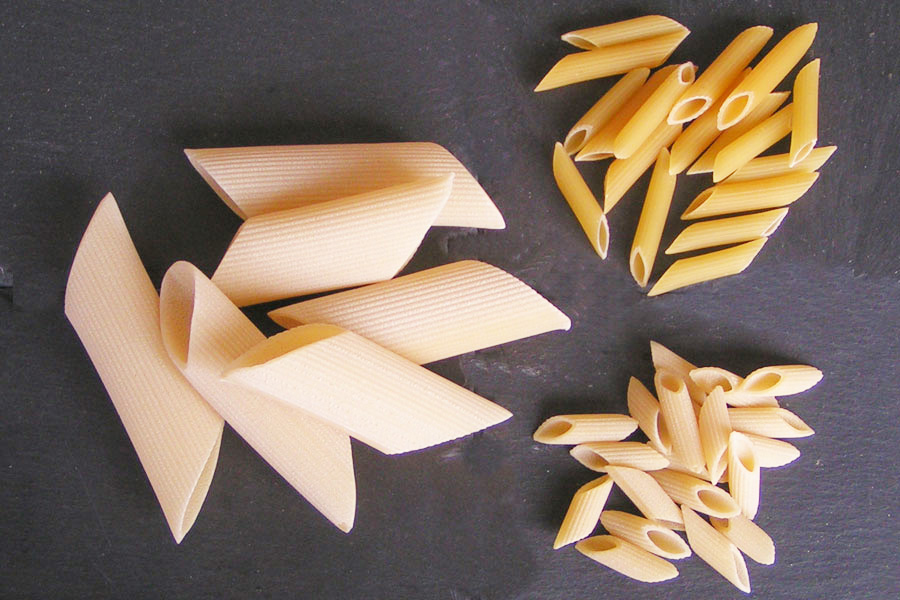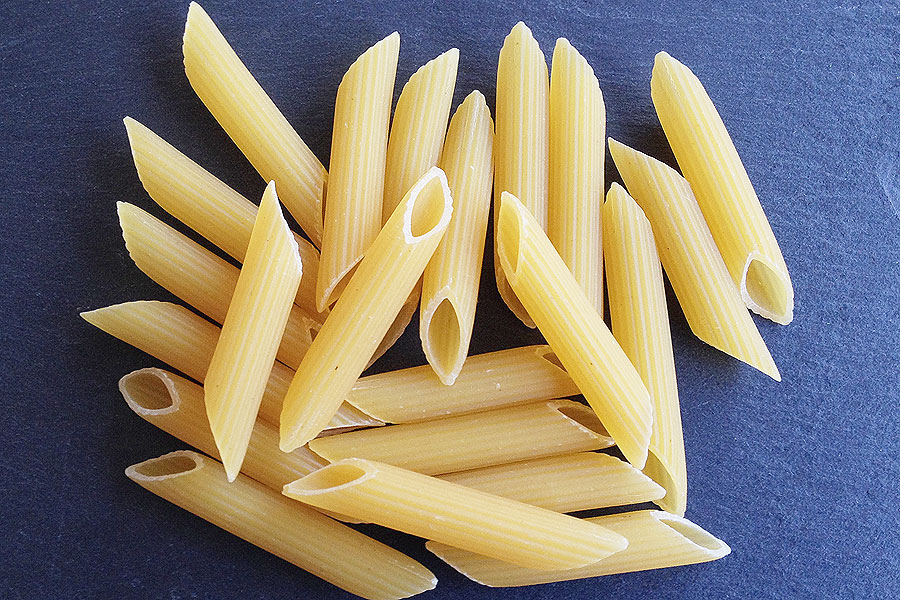Penne Pasta

Other Names:Pennoni (Very Large) |
Region:Genoa, Liguria, Italy & throughout Italy |
Made with:Semolina flour and water
|
About:Penne Pasta: Origin and History Penne is one of the most recognizable and widely consumed pasta shapes in the world.Its name, “penne,” is the plural form of the Italian word “penna,” meaning “quill” or “pen. This name perfectly reflects its design: short, cylindrical tubes cut diagonally at both ends, resembling the tip of an old-fashioned quill pen. Origin and Invention: Unlike some ancient pasta forms whose origins are lost to time, Penne pasta has a relatively precise birthdate. It was invented in 1865 in San Martino d’Albaro, a municipality in Genoa, Liguria, Italy. A pasta maker named Giovanni Battista Capurro is credited with its creation. On March 11, 1865, Capurro obtained a patent for a machine capable of cutting pasta diagonally without crushing it. Before his invention, achieving such clean, angled cuts on tubular pasta was a difficult, manual process often done with scissors, resulting in uneven edges. Capurro’s machine revolutionized the production of this shape, allowing for consistent and efficient manufacturing. Evolution and Types: Initially, penne was primarily produced in its smooth form, known as Penne Lisce. However, with the advent of mass production techniques, particularly after World War II, Penne Rigate (ridged penne) became more prevalent. The ridges were introduced not only to help sauces cling better but also, in some cases, to mask imperfections in the pasta that arose from changes in drying processes. While some argue that rigate is superior for sauce absorption, smooth penne still has its proponents, and its ability to hold sauce often depends on the quality and elasticity of the pasta’s gluten. Penne’s versatility and its ability to capture sauces, whether chunky meat ragùs or smooth creamy sauces, have made it a beloved staple in Italian cuisine and kitchens worldwide. It is also used in many baked recipes |
||
Source: Links for further reading:The Pasta Project |
Photo Credit: Bill Rubino
|

